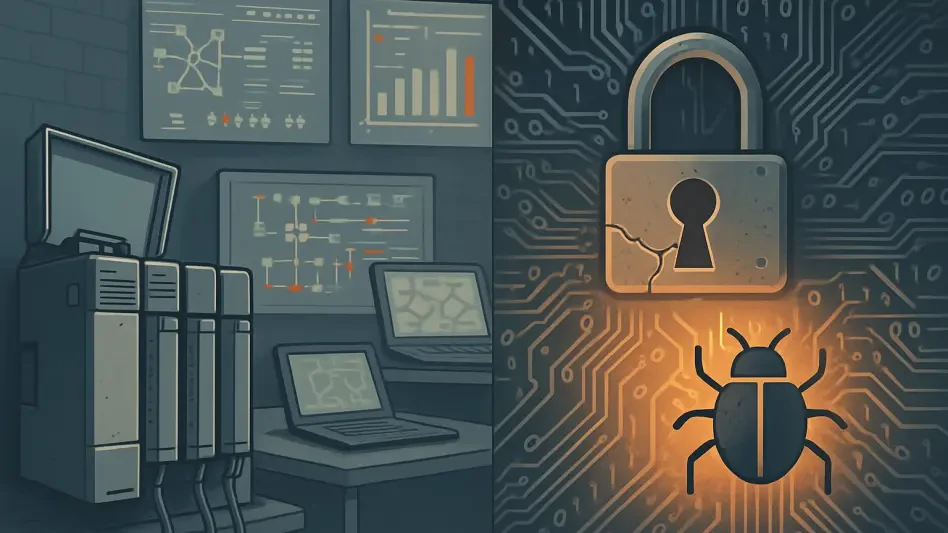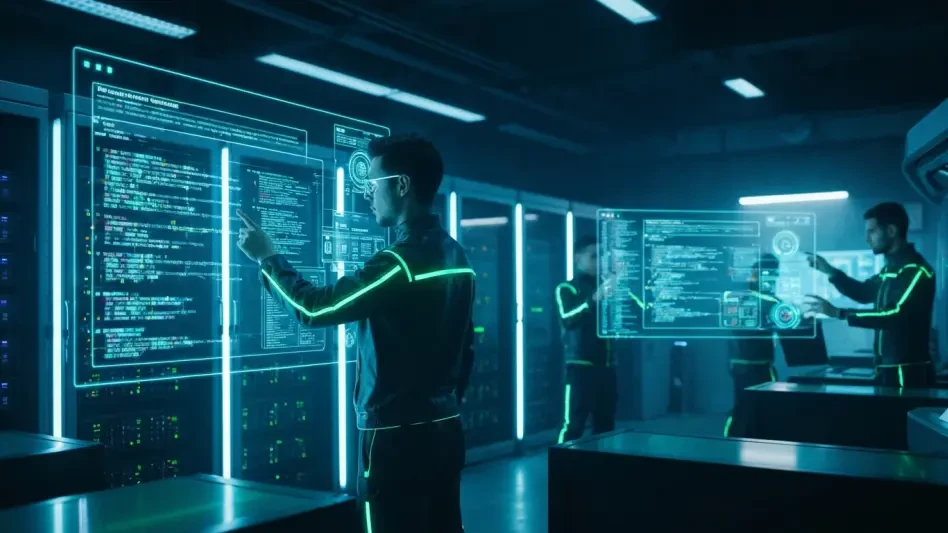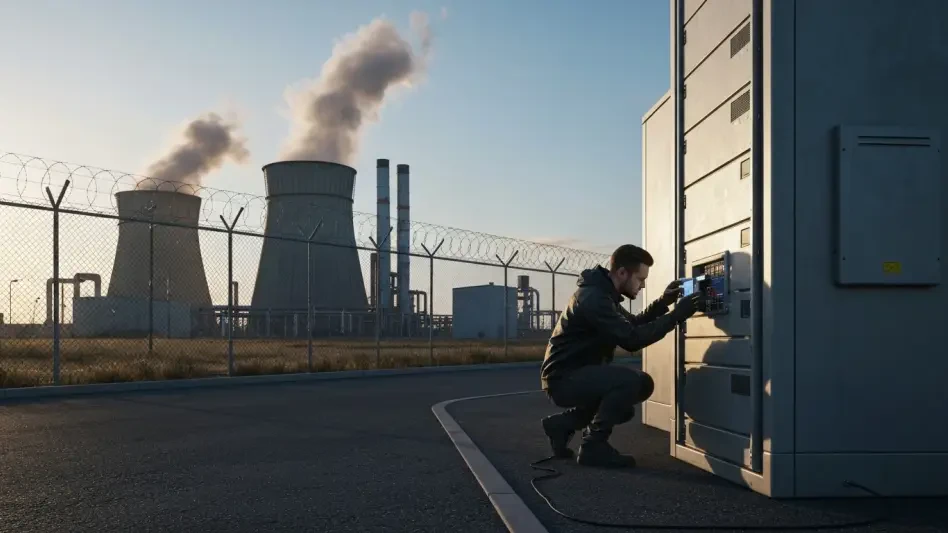What if the invisible networks controlling power plants, water treatment facilities, and transportation hubs could collapse with a single cyberattack? Recent alerts from the U.S. Cybersecurity and Infrastructure Security Agency (CISA) have exposed alarming vulnerabilities in Industrial Control Systems (ICS) hardware and software, revealing a harsh reality: the backbone of critical infrastructure is at serious risk. These systems, often unseen by the public, manage everything from energy grids to rail safety, yet they harbor flaws that could disrupt daily life on a massive scale.
This issue goes beyond mere technical glitches; it strikes at the heart of societal stability. With industries like healthcare, manufacturing, and transportation relying on ICS, a breach could mean more than downtime—it could endanger lives. The urgency to address these risks has never been clearer, as cyber threats grow more sophisticated and infrastructure becomes increasingly interconnected.
Why These Vulnerabilities Demand Immediate Attention
The significance of ICS cannot be overstated, as they silently orchestrate operations in chemical plants, power stations, and beyond. However, their pervasive role across critical sectors makes them a prime target for malicious actors seeking to exploit weaknesses. CISA’s latest reports pinpoint systemic flaws in products from major players like Honeywell, Mitsubishi Electric, and Delta Electronics, used worldwide in energy and healthcare systems, signaling a global challenge.
The potential fallout from these vulnerabilities is staggering. A single exploit could halt operations at a water treatment facility or compromise safety protocols in rail transport, creating ripple effects across multiple sectors. As digital connectivity ties infrastructure closer together, the stakes escalate, turning localized breaches into widespread crises that demand urgent focus from policymakers and industry leaders.
Diving Deep into the Flaws and Their Consequences
A closer examination of CISA’s five advisories reveals a troubling array of issues across ICS products. Memory-related vulnerabilities, such as buffer overflows in Honeywell’s OneWireless WDM and Experion PKS, carry critical severity scores like CVSS 9.4, enabling remote code execution that could cripple energy or water systems. Similarly, Delta Electronics’ COMMGR software suffers from a weak pseudo-random number generator, rated at CVSS 9.8, allowing attackers to seize control remotely with devastating ease.
Other flaws expose different but equally dangerous risks. The rail sector’s End-of-Train/Head-of-Train (EoT/HoT) protocol relies on outdated checksums, making it susceptible to manipulation via crafted radio packets, which could derail safety measures. Meanwhile, Mitsubishi Electric’s Iconics Digital Solutions face local exploitation risks through Windows Shortcut Following flaws, rated at CVSS 5.9, where even low-privilege users could disrupt manufacturing operations. These diverse yet interconnected issues highlight a pervasive threat across industries.
The scope of exposure is vast, touching healthcare, transportation, and critical manufacturing. High CVSS ratings underscore the urgency, with potential outcomes ranging from denial-of-service attacks to data leaks in hospitals. Real-world implications are evident, as even minor disruptions in train communication protocols have historically caused significant delays, hinting at far worse scenarios if vulnerabilities remain unaddressed.
Expert Warnings and Real-World Stakes
Voices from the cybersecurity field paint a grim picture of the current landscape. Researchers at Positive Technologies, who uncovered flaws in Honeywell systems, describe memory-related issues as a “recurring weak spot” in ICS design, emphasizing the challenge of secure coding. Trend Micro’s Zero Day Initiative, which flagged Delta Electronics’ vulnerabilities, cautions that remote exploitation tools are now widely accessible, lowering the barrier for attackers to strike.
Industry insiders add weight to these concerns. A rail sector expert, in discussions with CISA, highlighted that weaknesses in the EoT/HoT protocol could trigger “catastrophic safety failures,” drawing parallels to past communication failures that led to operational chaos. These expert insights, combined with CISA’s data showing consistently high severity scores, illustrate a race against time to fortify systems before sophisticated threats capitalize on known gaps.
The real-world implications are not hypothetical but grounded in tangible risks. With critical infrastructure sectors intertwined, a breach in one area, such as rail transport, could cascade into energy or manufacturing disruptions. This interconnected vulnerability amplifies the need for swift action, as the cost of inaction could be measured in both economic losses and human safety.
Practical Measures to Shield Critical Systems
Mitigating these ICS vulnerabilities demands concrete, immediate steps for asset owners, operators, and vendors alike. Patching known flaws is paramount—updates from Honeywell for Experion PKS R520.2 Hot Fix 1 and Delta Electronics for COMMGR Version 2.10.0 must be applied without delay to seal exploitable gaps. Where patches are unavailable, as with the EoT/HoT protocol, CISA recommends network segmentation to isolate critical systems and minimize attack surfaces.
Beyond technical fixes, strengthening access controls is essential. Restricting logins to trusted users and blocking remote access from unverified sources, as advised for Mitsubishi Electric’s Iconics solutions, can prevent unauthorized interference. Continuous monitoring tools should also be deployed to detect unusual activity early, providing a crucial line of defense against exploits like brute-force attacks on weak session IDs.
Long-term resilience requires a commitment to modernization. Replacing end-of-life products, such as Delta COMMGR Version 1, and outdated protocols with secure alternatives is vital, despite challenges of cost and complexity. Adopting a defense-in-depth approach, combining these measures, offers a robust framework to protect infrastructure across diverse sectors, ensuring that temporary fixes evolve into sustainable security.
Reflecting on a Path Forward After the Wake-Up Call
Looking back, the revelations about ICS hardware flaws served as a stark reminder of the fragility within systems society depends on daily. The high severity of vulnerabilities, coupled with expert warnings, underscored a critical juncture where inaction was no longer an option. Each sector, from energy to transportation, faced unique yet interconnected risks that demanded a unified response.
Moving ahead, stakeholders need to prioritize collaborative efforts, pushing for accelerated updates and innovative security protocols over the coming years, from 2025 to 2027. Governments and industries must invest in modernizing legacy systems, while operators are urged to adopt rigorous monitoring and access restrictions. This collective push is seen as the only way to transform vulnerabilities into fortified defenses, ensuring that critical infrastructure stands resilient against evolving cyber threats.








